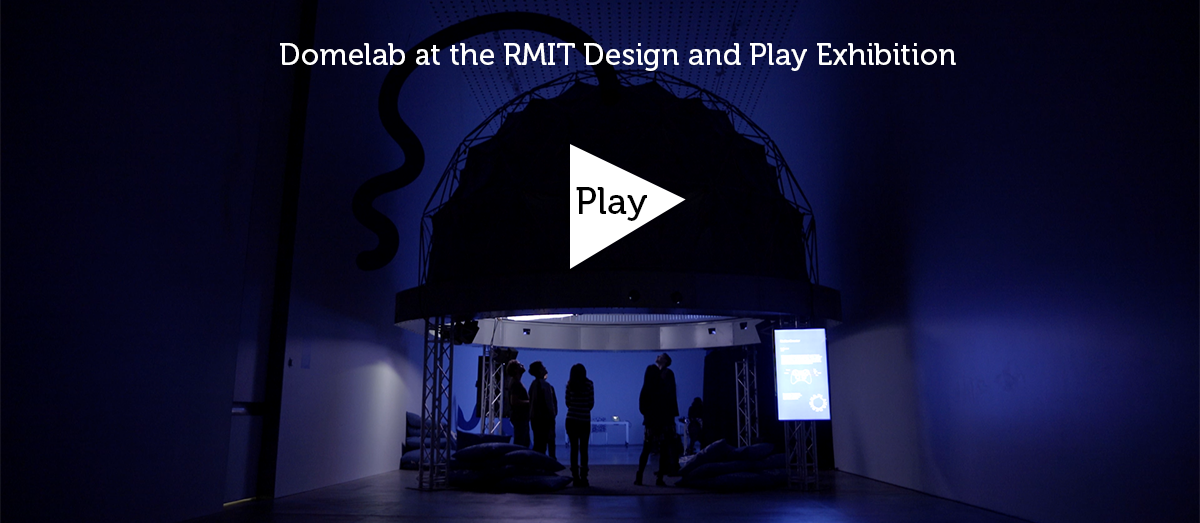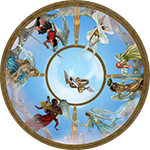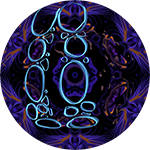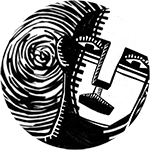RMIT University presented the Design and Play exhibition form 29 April 2016 – 14 May 2016 at the RMIT Design Hub Gallery. As part of this exhibition, the Centre for Game Design Research presented DomeLab.
Fulldome is a significant new medium that provides an innovative fully immersive visualisation space that goes beyond the typical framing of traditional cinema and desktop computing spaces. DomeLab is the first mobile ultra-high resolution (4K) (4096 x 4096 pixels) experimental fulldome in Australia. The immersive, dome-based video projection environment is 6m wide and uses negative pressure technology to create a perfect 6m wide hemisphere horizontally suspended over the audience. The visualisation of Domelab uses eight projectors that are supported by high-end workstations to provide a seamless ultra high resolution display. Domelab provides researchers with advanced immersive and interactive visualisation opportunities and is putting viewers at the epicenter of a multi-sensory experience.
Domelab assists researchers in extending conventional models to facilitate engagement into more complex information spaces and in doing so helps to advance new frontiers in immersive visualisation, intelligent interaction, collocated and networked interactive media experiences, museology and digital humanities research. It does this by providing an innovative fully immersive expanded field of representation as well a technical framework that puts the audience into an inhabitable information space with fully embodied audio-visual qualities that facilitates audience interaction as well as aesthetic experimentation, interrogation and analysis of the screen content. As such it provides a powerful platform for a range of disciplines that rely on the representation of multi-dimensional data for games, interactive media art, virtual heritage and digital archaeology, new museology and digital humanities, indigenous astronomy and storytelling.
Domelab at the Design and Play Exhibition was curated by A/Prof Stefan Greuter. For the Design + Play Exhibition at RMIT, researchers, students and alumni developed engaging multiplayer games, virtual art, animations and time labs videos that were specifically designed for the fulldome format.
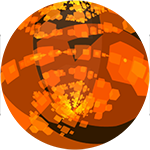 Pure Absence by Adam Nash
Pure Absence by Adam Nash
Great sound is silent. Great form is absent (Tao Te Ching, 41). The sensuous instinct wishes to to receive an object; the formal instinct wishes to produce an object (Schiller, Letter XIV). Can an individual subject resolve its incompatibility with itself through a transindividual environment of immersive digital data? Or is it merely creating more anxiety, the only true product of the digital era? So asks Pure Absence. Pure Absence is a playable, abstract, generative and composed, audiovisual realtime art and music experience in 3D. Revelling in the confusion of abstract space that is nothing like reality, and yet is, it shows how things are the same to see how they differ. Colours, sounds and player interact on an equally (artificially) stupid level of intention. Wondering ensues. Watch the video
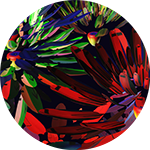 Look Petal by John Power & Steve Law
Look Petal by John Power & Steve Law
‘Look, Petal’ is a study in biomimicry, where the structural systems and forms of flowers are used to inform algorithms that drive a real time generative video installation. Watch the video
 Fuball by Jadd Zayed & Jack Sinclair
Fuball by Jadd Zayed & Jack Sinclair
Originally developed as a university assignment, Fuball is an abstract local-multiplayer sports game. In Fuball, players spin, shoot, and curve the ball to outsmart, outmanoeuvre, and outplay the opposition. The game features fast, fluid local-multiplayer action, innovative and unique controls, stunning minimalist visuals and smooth, easy-listening sounds. In October 2015, Fuball was selected to be presented at the Games Connect Asia Pacific conference as part of the first student showcase and is still in active development. Watch the video
In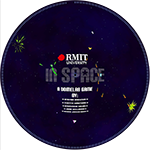 Space by Stefan Greuter
Space by Stefan Greuter
In Space is a multiplayer game experience for up to 4 players. Inspired by the game ‘Asteroids’ each player controls a spaceship within the confines of the hemispheric screen. To stay alive and score points destroy other spaceships and asteroids and watch out for the larger chunks of debris that is getting sucked into the black hole as it slowly emerges in the background. Watch the video
 Astrosurf by James Manning & William Goddard
Astrosurf by James Manning & William Goddard
Race through space in this fast-paced multiplayer infinite runner. No holds barred high-octane orbital action awaits. Strap on your jetpacks and take to the stars. Zigzag betwixt orbital debris against awe-inspiring space vistas. Prepare yourself for a sensory experience that is out of this world. Meteoric fun-fuelled frolics for all the family. Sick bags and safety belts not included. Watch the video
 Resonance Under the Dome by Jonathan Duckworth & James Hullick
Resonance Under the Dome by Jonathan Duckworth & James Hullick
Resonance is a unique interactive tabletop used as an audiovisual and ‘musical‘ instrument. The table has been designed by the 2015 Victorian Premier’s Award winner Dr. Jonathan Duckworth and his team at the RMIT Creative Interventions Art and Rehabilitation (CiART) Lab in collaboration with the Australian Catholic University and Griffith University. Resonance in the Dome featured internationally acclaimed sound artist James Hullick (Jolt Arts Inc.) performing three new works on the world-leading Resonance instrument and in concert with four celebrated percussion members of the BOLT Ensemble: Nat Grant, Timothy Phillips, James Townsend, and Hamish Upton. The movement and manipulation of objects, touch and gesture on the Resonance table generated sonic perturbations, pulsing visual lines and glowing fragmented geometries which display on both the table and the Dome.
 Time Speed by Shaun Wilson
Time Speed by Shaun Wilson
Timespeed is a sequenced timelapse dome artwork filmed in 5K stills using a motion control rig. One of the key aspects of this work the use of timelapse as a narrative device to establish storytelling that invites the viewer to experience a ‘cinematic condition’ of the moving image. The implications of the subject that act as a kind of mediator between the past and the present. Proust engages this notion in his deliberations when he talks about metaphor as such that envelopes the prompting of memory and from this, metonymy as the space drawn from memory which is not unlike the same kinds of effect that Timespeed engages both conceptually, and, of course, visually. As the viewer moves through the spaces of this work, the scenes allow the audience to bring their own memories into the cinematic space to then in turn experience the work not as a stand alone mechanisation but rather as a space they can envelope and intertwine with their own memories. Watch the video
Responsiveness by Masters of Animation Games and Interactivity
In only 4 weeks the students of the Masters of Animation Games and Interactivity Program conceptualised, developed and produced work for the fulldome format and developed a series of works for Domelab. The studio was led by Matthew Riley, Christopher Barker and Stefan Greuter. This showcase included work by Hui Jun Heng and Lale Yuksel (Decay), Xueyan Liu (Unleashed), Yiming Zhang (Urn), Bianca Basic and Giorgia Fichera (Behind the Dome), Lanyca Leng (Journey) and Tianze Li, Yixin Zhang and Bo Xu (New Planet).
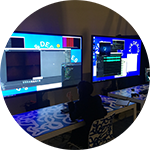
Live Lab
Domelab was also accompanied by a ‘Live Lab’ that enabled researchers to develop, refine and further explore the creative process of content production for the Domelab environment. The ‘Live Lab’ consisted of large Ultra High Definition Displays and Virtual Reality Hardware powered by the latest computer and graphics hardware to produce, render, program, compile and simulate work and prepare it for deployment on the Domelab visualisation environment. The work in the Live Lab was supported by staff and students from RMIT who provided expertise in regards to 3D Animation, Interaction Design, Technical Design, Game Design, Game Art and Games Graphics Programming and provided support to the students of the Masters of Animation Games and Interactivity Program as well as the delegates of the Domelab Masterclass to develop and test content for DomeLab and exposed the creative content development process to visitors of the exhibition.
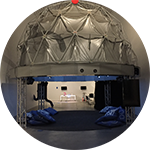 Domelab Masterclass
Domelab Masterclass
The exhibition was also be accompanied by a Masterclass in collaboration with Melbourne Knowledge Week (2-8 May 2016) covering the development of linear video and animation based content as well as real-time content including virtual art and digital games for this unique fulldome visualisation system. The Masterclass was led by Prof Sarah Kenderdine, Prof Paul Bourke and Associate Professor Stefan Greuter.
Domelab Impact
Domelab is a mobile visualisation environment and was showcased at the Design and Play Exhibition for the first time in Victoria, Australia. The Design and Play Exhibition attracted over 2000 visitors, making it the most successful exhibition at in the RMIT Gallery Space to date. Over 15 unique stories about Domelab at the Design and Play Exhibition have been published on news websites. During the three weeks of the exhibition, Domelab was the centre of 7 industry functions and 8 ticketed live performances by Dr Jonathan Duckworth, James Hullick and live music by the Bolt Ensemble and 4 Artist floor talks.
Acknowledgements
Domelab at the Design and Play Exhibition acknowledges the work of everybody involved in making Domelab at the the RMIT Design and Play Exhibition a huge success. In particular we would like to thank the Prof Larissa Hjorth, Lisa Byrne, Fleur Watson, Kate Rhodes, Nella Themelios, Erik North, Tim McLeod, Kate Riggs, Chloe Powell, Tin and Ed and Bianca Valentine. Domelab at the Design and Play Exhibition also would not have been possible without the support from Prof Martyn Hook (Dean School of Media and Communication), Prof Swee Mak (Director of the former Design Research Institute), the School of Media and Communications Research Committee and the College of Design and Social Context.
Domelab Alliance
Domelab is supported by an alliance of 15 investigators from 11 organisations whose pioneering research is at the forefront of new media art, interactive media, new museology and digital humanities and funded by an ARC LIEF grant:
Prof Sarah Kenderdine (UNSW) | Prof Michael Thielscher (UNSW) | Prof Martin Nakata (UNSW) | Dr Shawn Ross (UM) | Prof Paul Arthur (UWS) | Prof Ross Gibson (UC) | Dr Stefan Greuter (RMIT) | Prof Paul Bourke (UNSW) | Prof Christopher Lueg (UTAS) | Prof Jeffrey Shaw (CityU) | Drew Berry (WEHI) | Timothy Hart (MV) | Margo Neale (NMA) | Dr Lynda Kelly (ANMM)
Laboratory for Innovation in Galleries, Libraries, Archives and Museums (iGLAM), UNSW | iCinema Centre for Interactive Cinema Research, UNSW | University of Western Sydney | University of Canberra | Centre for Game Design Research, RMIT | University of Tasmania | City University of Hong Kong | Walter and Eliza Hall Institute of Medical Research | Museum Victoria | National Museum of Australia | Australian National Maritime Museum | AARNet | Intersect Australia

